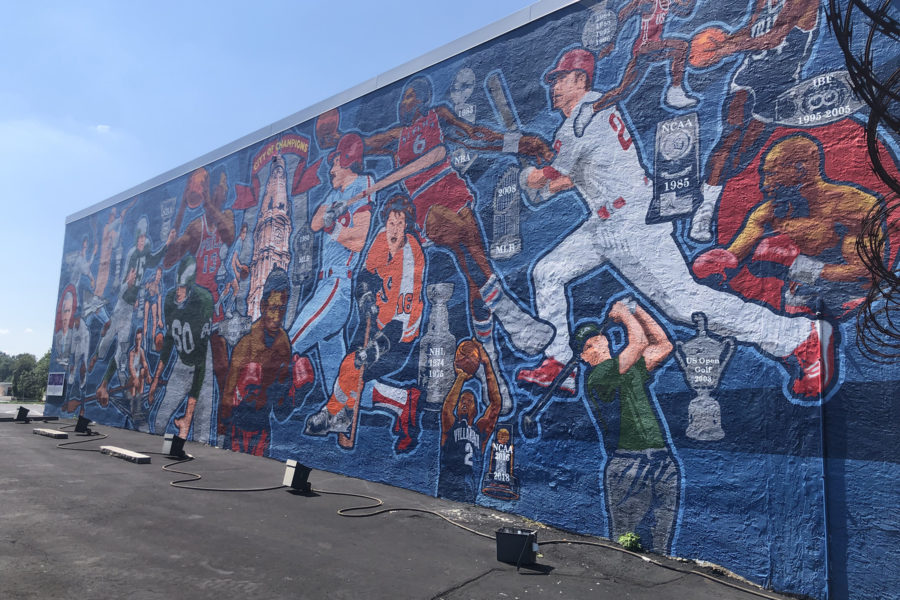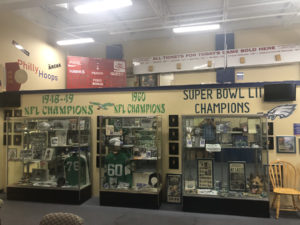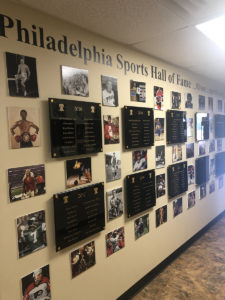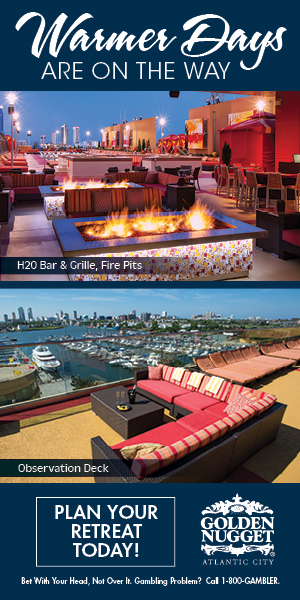
Anybody who met Eagles legend Tommy McDonald knew that the late Eagles wide receiver loved to interact with fans or just about anybody else in the world. McDonald was a five-time Pro Bowler and was inducted into the Pro Football Hall of Fame. And in 2005, he was part of the second class enshrined in the Philadelphia Sports Hall of Fame.
After the ceremony, McDonald greeted autograph seekers and others with his trademark kinetic energy and broad smile. As the line moved along, Steve Tallant was surprised at one of the people hoping to get something signed.
“There, waiting in line patiently to get McDonald’s autograph for his father was [former Villanova University basketball coach] Jay Wright,” says Tallant, the Philly Hall’s VP. “It was a case of celebrities meeting celebrities.”
What began as an article in The Inquirer wondering why a great sports town like Philadelphia didn’t have a sports hall of fame has become a centerpiece of the city’s vivid athletic history and has for nearly a decade celebrated the greatest players, coaches, teams, media members, contributors and even venues that make Philadelphia’s sports history so unique. Under the careful and passionate direction of Ken Avallon, the Hall gains more attention every year as it honors the greats and harbors hope of one day having a permanent home worthy of its remarkable enshrinees.

“Frank Fitzpatrick wrote the article asking why we didn’t have a sports hall of fame, and Ken said, ‘That’s a really good idea,’” Tallant says.
It is. Avallon went through the formal process of establishing the Hall and securing 501(c)(3) status for it. Bylaws were established, and Avallon established intentions of making the Hall a permanent history museum at some point in the future. Although that remains a dream still, there have been 18 classes of Philly sports heroes inducted, and in November, a group of 16 luminaries and the 1983 NBA champion Sixers team will gain admittance. The criteria for induction are fairly direct. Great athletes who grew up in the city and its surrounding area and those who were born elsewhere and distinguished themselves as all-time greats are eligible, and over the course of the last century-plus, there have been plenty of worthy candidates.
“We have 18 different sports represented,” Tallant says. “It’s a wide range outside of the ‘big four.’”
Anyone can submit a nomination, and the final voting is done by the eight-member Hall Board, as well as every living inductee, representatives from the major pro franchises in the city and the athletic directors at the Big Five schools. Tallant estimates that about 250 ballots go out every year, and about 175 are returned. Any nominee receiving 75 percent of the vote is automatically inducted, and the Hall’s Selection Committee finishes out the class. This year’s automatic inductees are Phillies shortstop Jimmy Rollins, former Villanova basketball coach Rollie Massimino and long-time NFL referee Art McNally.
“We are cognizant of honoring the city’s broad sports history,” Tallant says. “We went back to the early 1900s to induct some people.”
It happens every time. Whenever Keith Baldwin guides someone through the collection of Philadelphia sports memorabilia at his Spike’s Trophies store in northeast Philadelphia, he hears the stories.
“They tell you about their lives growing up fans,” he says. “The thread of Philadelphia sports continues through their lives.”
Since 2013, when it lost its lease at a property in Northern Liberties, the Hall of Fame has displayed its vast and rare collection of memorabilia at Spike’s, which Baldwin co-owns and at which he has worked – these days as Chief Relationship Officer and Majority Partner – for more than 45 years. Since Spike’s provided the awards for the Hall, Baldwin had a relationship with Avallon, and when the Hall needed a spot for its headquarters, Baldwin stepped up.
“We had just gotten into our new building [on Grant Avenue, near the Northeast Philly Airport], and we offered them free space,” Baldwin says.
“We have been part of the Philadelphia sports community for a long time, and we have a great appreciation for Philadelphia sports. We wanted to help, and we had the space, so we lent it to Kenny.”
Today, “between 3-5,000 square feet” of Spike’s property is filled with artifacts, and the walls are lined with the names of those who have been inducted. The Philadelphia A’s Historical Society is also housed at Spike’s.
 The collection is truly remarkable, and different pieces rotate in and out. For instance, there is the giant Phillies hat that sat on Billy Penn’s head atop City Hall during the team’s run to the 1980 World Series title. There is the original scoreboard from the Saint Joseph’s Fieldhouse. Visitors can see a basket from the Palestra and a hockey dasher board from the Spectrum.
The collection is truly remarkable, and different pieces rotate in and out. For instance, there is the giant Phillies hat that sat on Billy Penn’s head atop City Hall during the team’s run to the 1980 World Series title. There is the original scoreboard from the Saint Joseph’s Fieldhouse. Visitors can see a basket from the Palestra and a hockey dasher board from the Spectrum.
Part of the centerfield fence and some artificial turf from Veterans Stadium are on display, and there are video boards that provide some highlights and information about inductees. In conjunction with Mural Arts Philadelphia, there is a “City of Champions” mural on the outside wall of Spike’s that celebrates more than 100 years of title-winning teams. There is also a Super Bowl mural on an exterior wall. And those who want to spend a bit of time viewing the works of art can do so while sitting on bullpen seats from The Vet.
Because so many people come to Spike’s to see the memorabilia, Baldwin gets a chance to connect with folks from all over. Earlier this year, a young boy – “nine or ten years old,” Baldwin says – came up from Florida to undergo treatment at Shriner’s Hospital. His mother told Baldwin that he was a big Philadelphia sports fan, so he gave the youngster a tour of the Hall’s section of Spike’s. He gave him an Eagles mug with his name on it and then had a question.
“I asked if he wanted to come back to the [induction] banquet,” Baldwin says. “We’re going to fly him up. You should have seen the thrill in his eyes.”
While Baldwin and Spike’s continue to provide visitors with a truly unique experience, Avallon and his fellow Hall executives are thinking bigger. Spike’s is a fabulous spot for the Hall to show off its collection, but the ultimate goal is a dedicated museum that can allow for a full experience for fans and visitors. It’s a lofty aspiration, and it will require significant fundraising and the cultivation of sponsors. For a while, late Flyers owner Ed Snider appeared to be a potential benefactor, but his death ended the possibility.
Now, the Hall’s executives are looking at the Philadelphia Industrial Development Corporation for help locating a potential site. The annual enshrinement event brings out plenty of big hitters in the city’s business and sports community and provides ample networking opportunities. But progress is slow. Tallant estimates a 25,000-square foot property is necessary to house the museum and the Hall’s offices.
“To do it right ten years ago, that would have cost between $25-30 million,” Tallant says. “I would say that’s doubled. We need to have money for the museum and for reserve capital. A well-executed, immersive experience will cost about $50 million.”
There have been other efforts that have fallen short, most notably former Flyers exec Lou Scheinfeld’s Museum of Sport, for which he had secured a location near the Jetro parking lot in south Philadelphia. That project has lost momentum, but the Hall crew hopes its dream can become a reality.
“To fundraise, we need an executive board in place to reach out to donors,” Tallant says.
While there may not be a full-time physical museum for the Hall, it lives on at Spike’s and in every class of inductees which helps keep Philadelphia’s great sports history alive.

